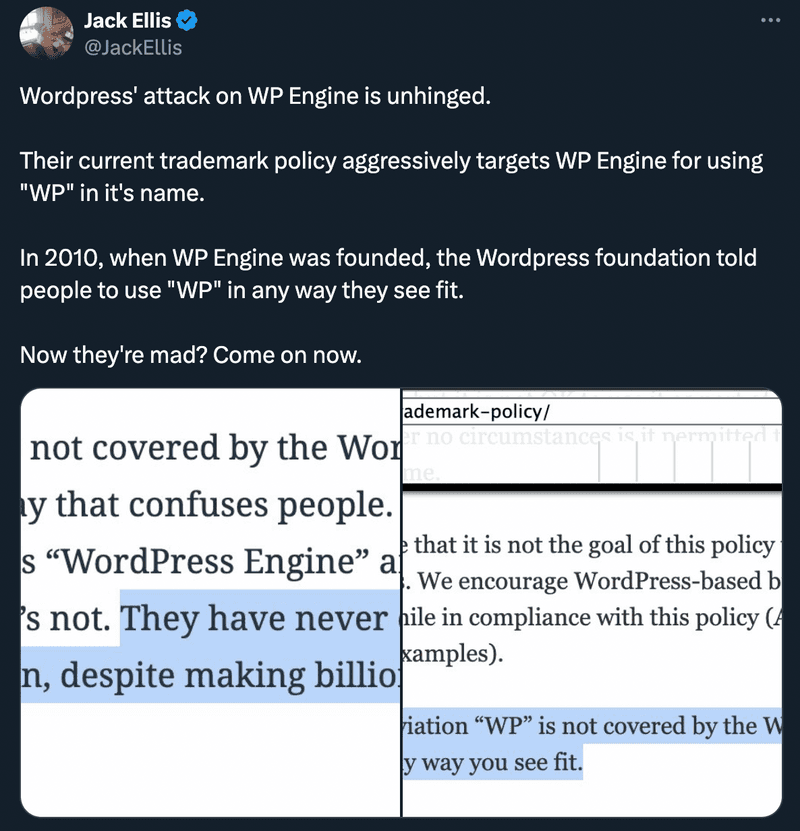How to add a proxy fix for WordPress sites hosted on WPEngine
If you are a customer of WP Engine and running your WordPress site then you might have been caught in the crossfire of the battle between WordPress and WP Engine.
I don't want to get into the specifics of the fight [to remain neutral since there is a conflict of interest]. Superblog is a blazing-fast blogging platform but not a true competitor for WordPress. You can only use Superblog as your blogging platform and not for your landing page.
Superblog is not running any migration offers to take advantage of the situation to move customers of WP Engine to Superblog.
The Problem
Since the public fight of accusations, allegations, and notices, WordPress blocked WP Engine's access to its plugin and theme repositories. As a result, 1.5 Million sites that use WP Engine cannot install or update any plugins, themes, or security updates. We are not clear what could be the next course of action as of September 27th, 2024.
The Workaround
There are three workarounds to fix this issue. All you need to do is mask the IP address of your site so that WordPress won't be able to identify and block your site from accessing its plugin and theme repositories.
1. Using Cloudflare
You can use cloudflare.com to migrate your nameservers to them using a free plan. This way, you get the Cloudflare shield, DDoS protection, and Origin Mask which hides the IP Address of your server from the outside world. Also, from WordPress. You will be able to install or update the plugins and themes using WordPress's official repository online.
This process is fairly easy but there will be some downtime for the NS propagation.
2. Using a Proxy Server
This workaround is directly lifted from a reddit post.
You need to purchase a proxy server or find one with a free plan [webshare.io].
Once the proxy is configured, you need to add the following configuration to the wp-config.php file:
define('WP_PROXY_HOST', 'xxx.xxx.xxx.xxx'); // Proxy Address
define('WP_PROXY_PORT', 'xxx'); // Port Number
define('WP_PROXY_USERNAME', 'xxxxx'); // Proxy Username (if exists)
define('WP_PROXY_PASSWORD', 'xxxxx'); // Proxy Password (if exists)
Additionally, it makes sense to limit the proxy usage only to the WordPress website using the following code: (optional)
add_filter('pre_http_send_through_proxy', function($result, $uri) {
if (strpos('wordpress.org', $uri) !== false) {
return true;
} else {
return false;
}
}, 10, 2);You can add it to the functions.php or another appropriate file.
There won't be any downtime for this method if the config is done correctly for the proxy server.
3. Using Zip File
As always, the convenience of WordPress is that you can download the plugins/themes as a zip file and install them manually via your WordPress admin dashboard.


